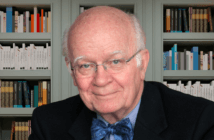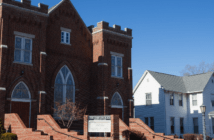Leading Ideas had the opportunity to sit down and talk with Bishop Robert Schnase, author of Five Practices of Fruitful Congregations (Abingdon Press, 2007). Here are some highlights from our conversation about the book.
Christ’s ministry was radical, passionate, intentional, risk-taking, and extravagant. Wow! Dare we settle for anything less?
What led you to write this book?
For me, the book helps answer the question, “How do United Methodist churches make disciples of Jesus Christ for the transformation of the world?” We do it through faith communities that are strong and healthy. We offer the embracing gracious welcome of Christ that creates a sense of belonging, relationship, and connection. We offer worship through which God changes people’s hearts and minds. We provide the means by which people grow in faith over the years through learning in community, Bible study, giving and receiving love. With the change in our interior lives, we sense the call of God to offer ourselves more fully to active service to make a positive difference in the lives of people. And we grow in generosity so that the church thrives and others receive what we have known. Through five, ten, twenty, forty years in a congregation, God works on us and forms us by the Spirit as we grow in Christ’s likeness. The book takes the mission of the church and makes it sensible, practical, memorable, and doable.
I also wrote the book because I find the language absolutely compelling. Radical Hospitality. Passionate Worship. Intentional Faith Development. Risk-taking Mission and Service. Extravagant Generosity. The nouns capture those activities that congregations must perform in an exemplary way to fulfill the mission of Christ. But the adjectives are what make the phrases come alive in imaginative ways. They push us to new resolve and higher commitment. Christ’s ministry was radical, passionate, intentional, risk-taking, and extravagant. Wow! Dare we settle for anything less?
As you have talked with congregational leaders about the book, what have you found most encouraging?
I’ve been encouraged by the way the book stimulates discussion, self-awareness, and creative response. Churches that are growing are those that are constantly figuring things out. They encounter challenges — how to reach younger people, how to provide more diversity in worship styles, how to reach single moms — and they ask, research, discuss, observe, visit, experiment, evaluate, risk. They are constantly learning, stretching, trying. They’re not afraid of setbacks, wrong turns, and stumbles. This agility, adaptiveness, willingness to risk for the purpose of inviting people in, reaching out, making a difference — I find this very encouraging. The book is intended to stimulate precisely this kind of outwardly focused culture of learning and serving.
Is there one of the five practices that seems to capture people’s interest immediately?
The words “radical hospitality” generate the greatest response. Interestingly, many people have reported that it was something in the Intentional Faith Development chapter that really made things click as they began to see how this all fits together into a compelling understanding of congregational mission and purpose. For me, the Risk-taking Mission and Service chapter practically wrote itself. I have found that many people resonate with the experiences of that chapter.
Is there one of the five practices that congregations find more difficult than the others?
All are challenging, and the adjectives never let us off the hook. A ministry that is radical, passionate, intentional, risk-taking, and extravagant is never complacent and is never finished. These words are compelling because they call us continually to repeat, deepen, and perfect the practices.
How might congregations wanting to become fruitful best use your book as a resource?
This book may provide interesting reading for individual pastors; and it includes a few hints that some laypersons or worship leaders may find helpful. However, I think the very best use is for several people in a congregation — pastors, laity, class members, visitors — to read it and study it together over a series of weeks, perhaps a chapter at a time. About 25 percent of their time should be spent becoming acquainted with the concepts, ideas, examples, and theology from the book; but 75 percent of their time should be spent talking about their own congregations — not focusing on problems or blaming, scapegoating, and denying. The discussion should be forward-looking, positive, hopeful, and action-oriented. I heard a counselor say to someone facing a tangled web of troubles and fears, “The most important decision is always the next one.” That’s true for churches. Use the book to stimulate truthful, positive discussion that leads to good decisions and fruitful action for the purposes of Christ.







